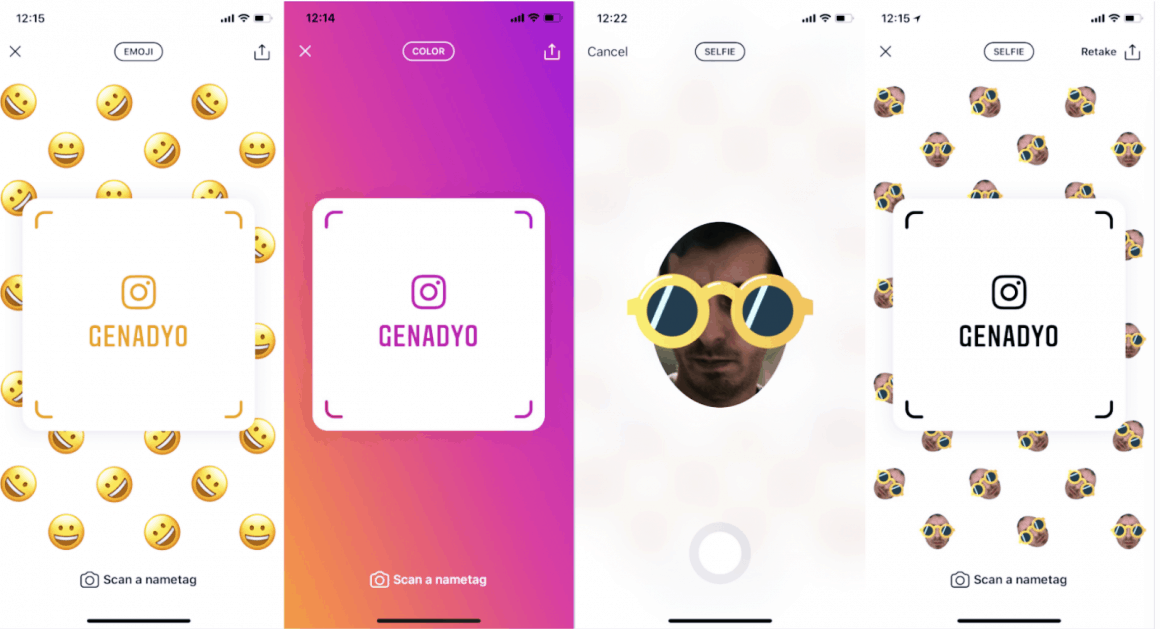Small, medium and large-sized brands are finally listening to the voice of the people. And that voice comes in the form of user-generated content (UGC)—content by the people, for the people, and realized through brands.
If you’re still looking for proof regarding UGC’s influence, just look at the whopping 93 percent of consumers who find it helpful when making a purchase decision. UGC is certified, and it’s not so much a question of brands asking if they should utilize UGC; it’s a case of them asking how they use it to inspire their audiences.
Finding a way to connect with audiences—whether through the use of traditional marketing methods or on social platforms—is becoming a trickier task for marketers to master. But there are many ways to popularize UGC content for more engaging interactions with your consu
Here are five uses of UGC that can help brands inspire audiences and get ahead in their marketing efforts.
1) Build trust with your audience: authenticity rules
Everyone desires credibility, and it’s no different for brands. They want to distance themselves from cold, corporate identities that are perceived to only care about their bottom line. Over the last couple of years, many have started doing just that with UGC.
The most significant way to gain trust is through honesty and transparency. Traditional branded content has oversaturated the market and rendered users passive consumers. There has been a sea change, however: Brands are now building trust with their audience through authenticity.

Take Busabout, the London tour operator company, for example. They have built their entire marketing communications centred around UGC. Busabout’s managing director, Duncan Robertson, decided to stop using professional photographs and instead start championing UGC in a bid to create better relationships with their audience.
Rather than seeing contrived photos that try and force an emotion, people instead see authentic imagery that captures a real-life moment when visiting Busabout’s website. The result has seen their social following grow and an increase in overall brand trust.
It is hard to argue against a better alternative than trust—especially in the world of marketing. UGC embodies a rawness that resonates with audiences far and wide. If they can see other consumers of a brand interacting and enjoying the experience, they are more likely to get involved themselves. After all, 85 percent of users find UGC more influential than branded photos or videos.
2) UGC enables Stronger Conversations
Not only is UGC an enabler for building trust with audiences; it actually gives them a voice. You only need to look at the role companies like TripAdvisor and Trustpilot have played in giving people a platform to leave online reviews. Consumer reviews are 12 times more trusted than when they come directly from the organization.
Brands have picked up on the review method and taken it one step further, interacting directly with audiences, having conversations and empowering them to take an active role in the brand. They place more trust in their customers and, as a result, find that the feeling is being reciprocated.

Nike is one of the largest companies on the planet and sells billions of dollars worth of clothing. And in recent times, they have embraced UGC to generate better interactions and conversations with their customers, starting with the Nike PHOTOiD campaign.
Nike PHOTOiD encourages customers to design, share and buy custom shoes inspired by other customers’ reposted Instagram photos. It not only gets people interacting with the brand; it motivates them to connect with each other, further enhancing the idea of a community.
Customers felt inspired and therefore wanted to be part of the brand, using the opportunity to show-off their custom-designed sneakers on Instagram. It’s easy for a multi-billion dollar company like Nike to become a faceless organization, yet UGC has validated them as a reliable and conversational brand that empowers its customers.
3) Repurposing branded media

The tried and tested ways of marketing evoke thoughts of a group of professionals in a Think Tank, trying to come up with the next “light bulb” idea to move the brand forward. However, repurposing branded media saves lots of time and resources.
Repurposing media is a fairly straightforward process, too. As a brand, you need to give your audience a reason to interact with you, and there are many ways to do that. You can essentially turn old school methods like competitions and business cards into fun, engaging ways of interaction.
Run hashtags competitions across social media, asking your followers to post content under your chosen hashtag. With a snazzy prize on offer, people will be more inclined to go out of their way to take authentic content and share it with your brand.
The Empire State Building has been known to run photo competitions over the years, asking people to take a snap of the iconic building with an accompanying hashtag. They got tons of content as a result and drove engagement without having to spend outlandish amounts on marketing.

There are always innovations and tweaks designed to help brands think outside of the box when it comes to repurposing content. Instagram nametags have provided a way for people and companies to create name tags and print them onto business cards, which can then be used to populate at networking events. It’s a way to get your brand in front of new eyes and offer an easy route to your IG account, where people can then contribute to your channel.
4) Telling other people’s stories
UGC is an ode to putting the people first. Sure, as a brand you’re going to see results for embracing the method—but the key is to put the power in the hands of your audience. Giving them a platform to tell their story is a surefire way to create compelling content that reaches across the board.
From funny anecdotes to heartfelt stories, brands have the power to give a voice to those that often feel voiceless. International delivery company UPS showed the strength of telling stories by championing their customers’ stories with their annual campaign, #wishesdelivered.
The aim was to turn people’s wishes into reality, with the narrative behind those wishes acting as the real driver. From people desperate to get home to their families for the holidays to reuniting soldiers with their pets, UPS managed to elicit emotional responses from their audience by making the wish of a customer come true.
5) Turn your employees into brand ambassadors
With social media playing such a huge role in any brand’s communications, sometimes looking even further afield than your audience can be an effective way to drive brand engagement. Personal profiles often hold more weight than company ones, which is why getting your team members to interact internally with a brand’s UGC can generate buzz and create a new dynamic.
Any interaction official between brand platforms and employees needs to authentic. Otherwise, people will see it as a cheap marketing ploy. But, if done correctly, it can be a help humanize and encourage your audience to be more interactive across different channels.
Deloitte turned to their employees and asked them to make videos to appeal to college kids who might be thinking about a career with the accounting firm. They created the Deloitte Film Festival, where employees made creative videos about what it was like to work for the company.
The results were even better than first anticipated: “What’s your Deloitte” managed to gain the attention of both young adults fresh out of college and general goodwill from their audience who appreciated the “out of the box” thinking of the campaign. They also saw a spike in media reporting, generating more exposure around the company. By handing the reins over to their employees, Deloitte enhanced their brand profile.
UGC for a better brand
UGC is a powerful tool that can enhance every facet of your brand. It’s completely plain sailing all the way, however. While there is so much excellent content that comes from UGC, brands need to make sure that they adhere to copyrights—especially as much of it comes from social media.
Without the permission of the content owner, you might find yourself in a sticky situation. Such a scenario is easier to negate when you’re running competitions with defined hashtags. However, it can be slightly tougher if you want to use specific content and need to reach out to the owner directly.
Marketers need to make sure they are completely up to date on social media copyrights so that they can maximize their UGC output. With clear communication and dialogue, most issues can be resolved, leaving your brand to display the best UGC.
More authenticity, more recognition and more interaction. What’s not to like about UGC?



